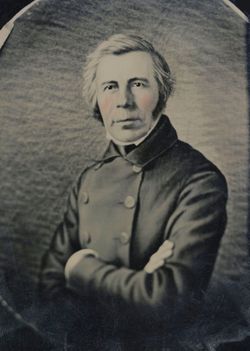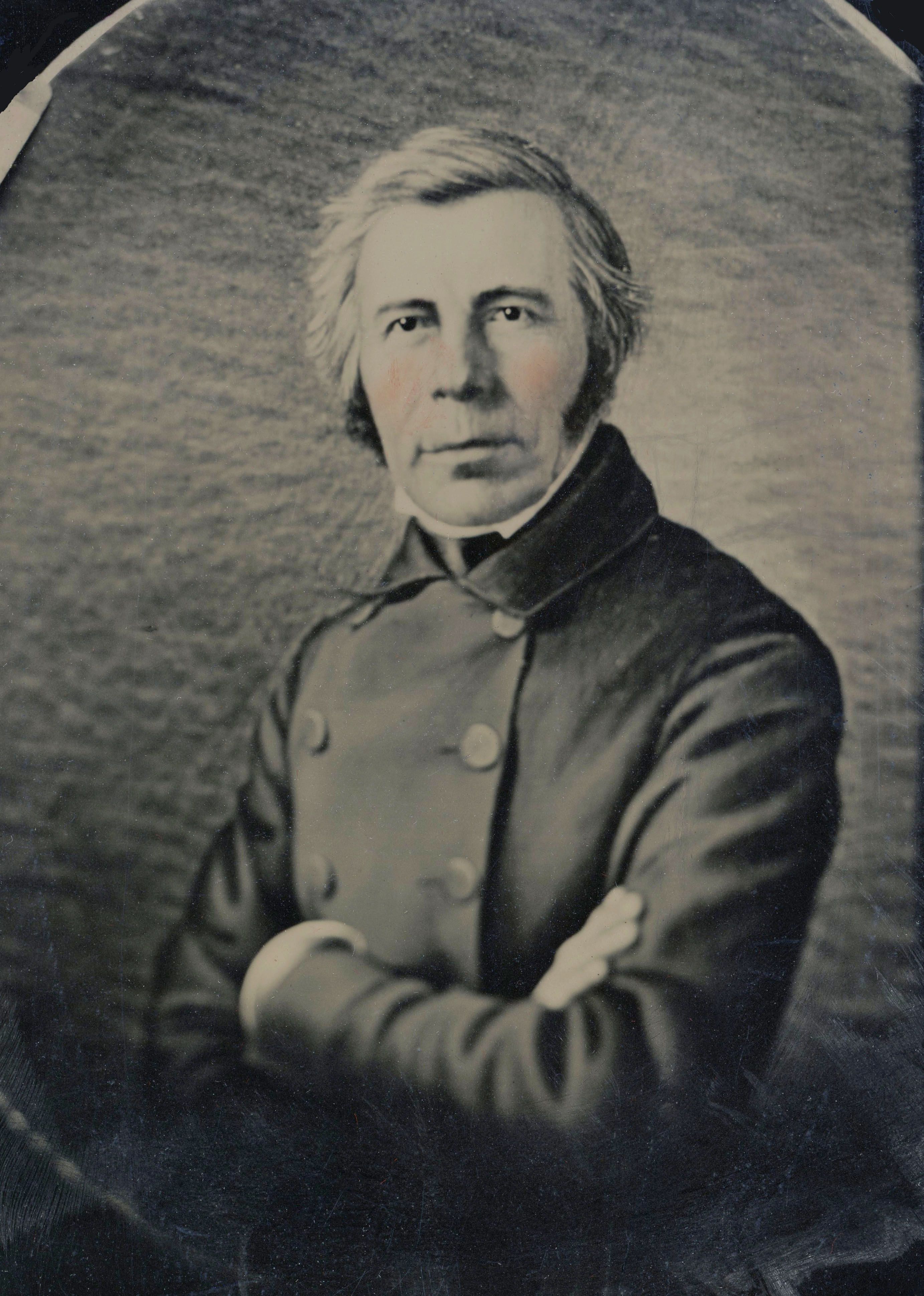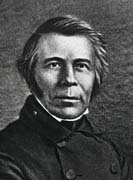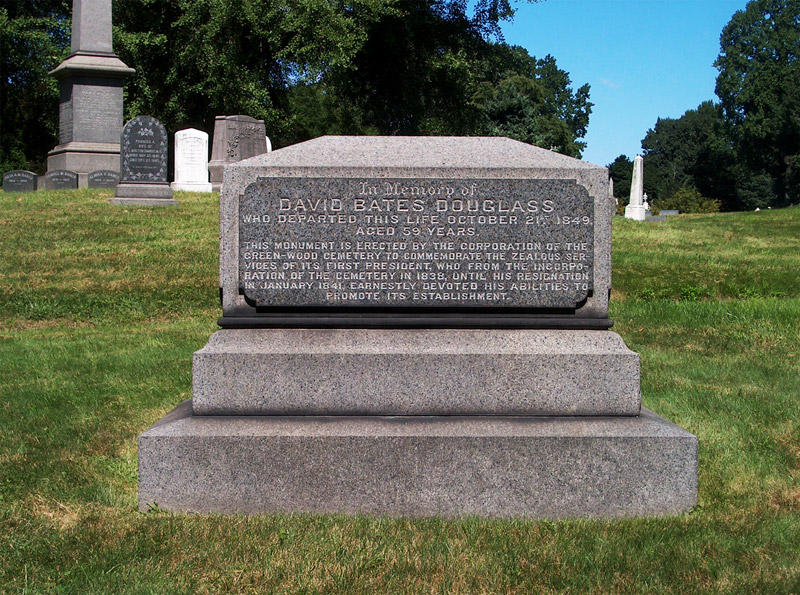Though technically Kenyon's third president, Douglass was actually its first. Since meeting one another at West Point, Bishop Charles Pettit McIlvaine had long desired to bring Douglass to Gambier to head up the collegiate department. Having triumphed over a mutinous faculty in 1840, McIlvaine remade Kenyon College with a new administration, faculty and constitution. The new institution included the new position of President of Kenyon College. Prior to 1840, this job rested within the responsibilities of the Bishop of Ohio.
Finally acceding to Bishop McIlvaine's calls to Gambier, Douglass arrived early in 1841 and quickly began to give the institution a new sense of purpose, direction, and energy. George W. Jones K1846, a contributor to the publication Kenyon Advance, wrote in 1880: "To President Douglass is credited the first effort influencing the improvement of the College grounds. Prior to these, piles of dirt, wood, ashes, enlivened by old boots and crockery, distinguished Kenyon as a rentable abode of utter slovenliness and neglect. The path to the village was marked out by the industrious and indefatigable President, and most thoroughly made by the students (mark that). A careful examination will find it well underlaid with rough stone broken into useful size, and covered with a thick coating of creek gravel. Those wonderful gate pillars, affecting the prehistoric, marking the domain of the townsmen, speaking out in tones of thunder, 'Thus far shalt thou go and no farther,' were duly respected, and few townies ventured beyond except under privilege of the Church." In addition to Middle Path, Douglass also brought the Gates of the College, Founder's Day, and the Rite of Matriculation to the Hill as institutions that continue to the present day.
Douglass' strong vision and firm style, however, quickly began to reap discontent in Gambier. McIlvaine and Douglass were unable to agree on the appropriate roles of the President and the Bishop, and a struggle for authority ensued. A secret inquiry was begun by the McIlvaine-loyal Board of Trustees into the management style of Douglass in 1843, resulting in their request for his resignation. Douglass refused to respond to their request, and the position was declared vacant in 1844.
After leaving Gambier with his family under these difficult circumstances, Douglass returned to work as a civil engineer until accepting the Professorship of Mathematics and Natural Philosophy at Hobart College. He died only one year later, on October 19, 1849. Kenyon boasts no named memorials to Douglass on today's campus; however, his simple contribution of Middle Path serves as a strong reminder of Kenyon's president-engineer.
David Bates Douglass was not the first Douglass in Gambier, nor the last. Douglass' son, Charles Edward Douglass, graduated from Kenyon in 1837, prior to his father's appointment to the presidency, while Douglass' great great grandson, Richard Rickard, worked with Kenyon's School-College Articulation Program (SCAP) from 1979-1990 and served as director of the program from 1980-1983. While David Bates Douglass was the first Douglass family member to significantly add to the Kenyon campus early in the College's history, the most recent contribution to Kenyon from the Douglass family came this past spring from Mr. Rickard, who donated family papers of David Bates Douglass and Charles Edward Douglass to the Kenyon College Archives.
Though technically Kenyon's third president, Douglass was actually its first. Since meeting one another at West Point, Bishop Charles Pettit McIlvaine had long desired to bring Douglass to Gambier to head up the collegiate department. Having triumphed over a mutinous faculty in 1840, McIlvaine remade Kenyon College with a new administration, faculty and constitution. The new institution included the new position of President of Kenyon College. Prior to 1840, this job rested within the responsibilities of the Bishop of Ohio.
Finally acceding to Bishop McIlvaine's calls to Gambier, Douglass arrived early in 1841 and quickly began to give the institution a new sense of purpose, direction, and energy. George W. Jones K1846, a contributor to the publication Kenyon Advance, wrote in 1880: "To President Douglass is credited the first effort influencing the improvement of the College grounds. Prior to these, piles of dirt, wood, ashes, enlivened by old boots and crockery, distinguished Kenyon as a rentable abode of utter slovenliness and neglect. The path to the village was marked out by the industrious and indefatigable President, and most thoroughly made by the students (mark that). A careful examination will find it well underlaid with rough stone broken into useful size, and covered with a thick coating of creek gravel. Those wonderful gate pillars, affecting the prehistoric, marking the domain of the townsmen, speaking out in tones of thunder, 'Thus far shalt thou go and no farther,' were duly respected, and few townies ventured beyond except under privilege of the Church." In addition to Middle Path, Douglass also brought the Gates of the College, Founder's Day, and the Rite of Matriculation to the Hill as institutions that continue to the present day.
Douglass' strong vision and firm style, however, quickly began to reap discontent in Gambier. McIlvaine and Douglass were unable to agree on the appropriate roles of the President and the Bishop, and a struggle for authority ensued. A secret inquiry was begun by the McIlvaine-loyal Board of Trustees into the management style of Douglass in 1843, resulting in their request for his resignation. Douglass refused to respond to their request, and the position was declared vacant in 1844.
After leaving Gambier with his family under these difficult circumstances, Douglass returned to work as a civil engineer until accepting the Professorship of Mathematics and Natural Philosophy at Hobart College. He died only one year later, on October 19, 1849. Kenyon boasts no named memorials to Douglass on today's campus; however, his simple contribution of Middle Path serves as a strong reminder of Kenyon's president-engineer.
David Bates Douglass was not the first Douglass in Gambier, nor the last. Douglass' son, Charles Edward Douglass, graduated from Kenyon in 1837, prior to his father's appointment to the presidency, while Douglass' great great grandson, Richard Rickard, worked with Kenyon's School-College Articulation Program (SCAP) from 1979-1990 and served as director of the program from 1980-1983. While David Bates Douglass was the first Douglass family member to significantly add to the Kenyon campus early in the College's history, the most recent contribution to Kenyon from the Douglass family came this past spring from Mr. Rickard, who donated family papers of David Bates Douglass and Charles Edward Douglass to the Kenyon College Archives.
Inscription
This Monument Is Erected By The Corporation Of The Green-Wood Cemetery To Commemorate The Zealous Services Of Its First President, Who From the Incorporation Of The Cemetery In 1838, Until His Resignation in January 1841. Earnestly Devoted His Abilities To Promote Its Establishment.
Gravesite Details
Interred on 09 August 1856
Family Members
Advertisement
Explore more
Sponsored by Ancestry
Advertisement










